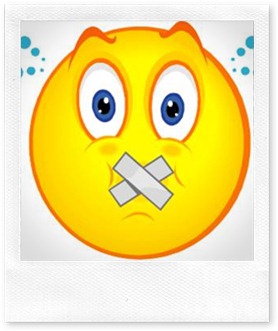Entries Tagged 'copywriting tips' ↓
March 24th, 2010 — copywriter, copywriting tips, freelance copywriter, website copywriting

If you’re a bit of a petrol head, I bet the sound of a V8 racing past gets your spine tingling. There’s something very special about that throaty roar.
Normally coupled with a sleek body, gorgeous good looks (yes, I’m still talking about the car) and sumptuous interior, its all your boy-hood (or girl-hood) dreams come true.
A car without one is simply, well a car – just your usual run of the mill banger to get you from A to B.
Is your website a Ferrari or an old banger?
Ask any website designer what pattern a typical visit to their website follows and they’ll tell you:

Basically, a visitor will land on their home page, click through to see examples on their portfolio page and then either get in touch, or go elsewhere.
Why does this happen?
Because many people’s main concern is still the aesthetics of their website. They want it to look slick and sexy. They want flash and loads of images and graphics that look pretty. In other words, they want a Ferrari.
But if this is your main focus when looking for a new website, you’ll probably end up with an old banger.
Don’t get stuck in the scrap yard
You might think a gorgeous looking website can’t fail to sell. You’d be wrong.
A gorgeous looking website on a web designer’s portfolio will sell. But if you try and use it to sell your products, on its own it will fail.
Despite the huge amounts of information on the web about search engine optimisation, many people are still not doing it, or doing it badly.
A fabulous looking website is like a Ferrari without an engine – it’s useless. The engine of your website comes in two forms – its content and links.
The web copy on your site has to be:
- SEO friendly
- Compelling
- Relevant
- Interesting
- Benefits driven
- Unique
A tall order if you’re writing it yourself. If you’re serious about getting the SEO copy right on your website, hire an SEO copywriter to write it for you.
But make sure you chose wisely – beware the copywriter who talks about keyword density or who doesn’t know what an H1 heading is or who can’t explain the significance of a Page Title.
Don’t forget the links
Getting your on-page SEO right is a great start, but then you have to work on your linking strategy.
Google adores one way back links – they are links you get from other websites to yours. There are numerous services out there who claim to be able to build thousands of links for you overnight (practically). But be careful – the best links are those that are from sites relevant to your industry. The most effective way to link build is to do it yourself through article directories (e.g. ezinearticles) and using web 2.0 properties such as Squidoo.
Organic is good for you
You might decide that you want to go pay per click rather than battling with SEO. If you have a large marketing budget then go for it. But if you’re not lucky enough to have bottomless pockets, organic search results really are the best way to market your business today.
The days of consumers turning to the Yellow Pages or local press ads are disappearing fast. Today, even for local searches, people are turning to the internet.
Don’t forget, one advantage the search results have over the Yellow Pages is, if you have one or more search results on page one, you’re pushing your competitors off the front page and onto page 2!
So don’t forget – a great looking website won’t sell your products. Relevant, interesting copy will.
March 19th, 2010 — b2b copywriter, copywriter, copywriting tips, freelance copywriter
 When was the last time you actually saw a business do business?
When was the last time you actually saw a business do business?
Personally, I’ve never witnessed a company pick up a phone to place an order to arrange an appointment.
In the world I live in, it’s the people that run the companies that do the buying, selling and phone calling.
Selling to business
In all the years I’ve been working as a freelance copywriter I have written copy for personal customers and business customers – B2B and B2C.
If I’d been given a pound every time a new client said “My main clients are other businesses so your copy will need to be very corporate….”
Number 1 – real people run businesses. Real people make buying decisions therefore writing to sell to businesses isn’t that different to writing to sell to individuals.
Even though your client has a corporate image and headed note paper, they still experience problems. And those problems need solving.
B2B emotion
As a B2B copywriter I know how important it is to pull on the emotional triggers. Business owners have concerns and worries the same as anyone else – and they want solutions to those worries.
If your copy blatantly disregards those basic needs, your sales message is going to fall on deaf ears.
But if your message shows you understand their problems and you have the solution that will take their pain away – you’re more likely to have a winner on your hands.
To achieve this you can employ many of the psychological triggers that you already use on your personal customers.
Keep it simple
The language you use should also be relatively simple. It is often argued that b2b copywriting should be more formal and complex because you are addressing other companies. Plus the level of management you are aiming is going to be well educated and therefore will expect something rather more ‘high brow’.
Again, don’t forget you are writing to normal people. They are also likely to be very busy. A complex, dense document is not going to look as attractive as a powerful headline, a paragraph of stonkingly good sales copy that is packed with benefits and a strong call to action.
When you next write b2b copy, remember:
- The company can’t pick up the phone
- Your are selling to a human
- They still have problems for which they are looking for solutions
- They will be time-limited so keep it short, simple but strong
March 15th, 2010 — copywriter, copywriting tips, freelance copywriter, sales writing

It’s Mothers’ Day so I’m sat here in front of my computer working while the kids and my husband are glued to the TV watching the Bahrain Grand Prix.
Everything has to stop in this house when it’s F1 season – especially as Schumacher is making his big comeback this season (or at least he hopes!).
I’m not doubting that this year should see some amazing races. After all we have Hamilton and Button as team mates, Alonso looks strong and Vettel has got the first pole of the season.
So the big question is, has Schumacher still got what it takes to win races?
Moving on
You’re probably wondering what all of this has to do with copywriting. Well, if Schumacher drives as he used to when the cars were different and the rules were different, he’s not going to get very far.
Although he’s been working as a consultant for Ferrari since his retirement, he’s not actually been out there behind the wheel of an F1 car for sometime.
If he doesn’t move with the times. he’ll be left behind. And that is precisely what will happen with your copywriting if you just continue to churn out the usual stuff.
Freshen up or risk boredom
If you put out the same old sales message time and time again, your audience is going to get bored. Even though you may want to keep your colours and corporate image static, you need to alter your message and style.
Not every product or service you want to market is going to be successful if you market them in the same way. Think about your customers –what type of person are they? how old are they? what social standing do they have?
When you want to produce a new advert, sales letter, landing page etc., don’t just regurgitate what you’ve done before. Go for something different – make people stop and think “Oh, that’s different. I wander what that’s about.”
Giving a new take on your advertising keeps it fresh and arouses curiosity. If you can get your audience curious they’ll want to know more.
Tips to keep your copywriting fresh
There are a few techniques you can use to try and give your copy a new twist. It’s very easy to get stuck in a rut if you’ve been writing for the same product for a while.
Try one of these suggestions next time you are struggling to find an original angle:
- Browse through the websites of your competitors and see what they’re doing. This might help generate new and innovative ideas.
- Study headlines to find a new, stronger angle.
- Try to link your product to something topical – use a current news story to give a different slant to your marketing.
- Talk to friends and family about the product – they can sometimes be a great source of inspiration.
- When you’re out and about be aware of what’s around you, look at adverts, listen to people – you can pick up great ideas from casual conversations.
- Study news papers and magazines – keep cuttings of interesting articles and headlines that could be useful.
The world around you is full of fresh and interesting information that can be used within your marketing. All you have to do is be more aware.
Oh, and by the way – despite Vettel’s pole position, his car let him down, Alonso won. And Schumacher – 6th.
March 8th, 2010 — copywriter, copywriting tips, freelance copywriter

If there was a magic formula to guarantee that everyone who came into contact with your copy would read it, I’d be out of a job.
Luckily for me there isn’t one.
There is one aspect of the human race that makes the life of a copywriter rather difficult – we are all different.
What makes one person jump for joy will have another heading for the hills. So when you’re faced with writing some web copy, email content or sales letter, how on earth do you get everyone to read it?
Don’t write for the masses
When writing some sales material you have to bear in mind that not everyone is going to want to read it. So if you try and pitch your writing for everyone you’re going to shoot yourself in the foot.
If you are writing about fishing rods the likelihood is that only a certain percentage of male readers will be interested in it. If you are writing about the latest make-up product, only a certain percentage of women are going to want to read about it.
Therefore it is vital that you write for your ideal reader – the person who is likely to be interested in your product.
This is where the cat comes in
Your headline is the crux of your writing – it is what will either hook your reader or send them running.
There are a number of ways you can write strong headlines but for the purpose of this post I want to look at just one – curiosity.
Most people don’t read adverts. It’s like a newspaper – how many of you actually sit down and read every word printed? You are more likely to skim the headlines and hone in on the ones that look interesting or, more likely, pique your curiosity.
For example if I were to tell you that I knew how to write sales letters that convert at 15% and sales letters were a big part of your business, you’d want to know more – right?
How to introduce curiosity
The best way to get curiosity into your copy is by hinting at a secret – human nature will make us want to know more:
- What everyone one should know about the stock market
- The top ten reasons why you won’t get that job
- How I went from broke to earning 8 figures a year in 6 months
But it’s not just about sales or secrets.
 Take George here. He’s running an exhibition and wants to promote it to boost his visitors. One of his exhibits is a painting. It’s nothing particularly famous or anything but the owner paid a small fortune for it – which heading would have the biggest draw?:
Take George here. He’s running an exhibition and wants to promote it to boost his visitors. One of his exhibits is a painting. It’s nothing particularly famous or anything but the owner paid a small fortune for it – which heading would have the biggest draw?:
- Exhibiting the “Cat and goldfish” by P Brush
or
- Exhibiting the “Cat and goldfish” by P Brush which was recently sold for £850,000
It would be the second one. Because by mentioning the price it immediately makes us curious. We want to see this amazing picture that someone paid a small fortune for.
Curiosity is an itch
It is the itch that you have to scratch.
If you don’t discover the secret you’re going to miss out on something. Everyone else will know something you don’t.
Using curiosity in your headline you’ll make people want to learn more. They’ll be drawn to your copy like a magnet. So next time you are writing a piece of sales copy try it out.
Sally Ormond – freelance copywriter
March 5th, 2010 — copywriter, copywriting tips, freelance copywriter

If you’ve been copywriting for a while you should already be well aware of these secrets.
Every industry has best practices within it that everyone should know and abide by. Of course, if that were true there would be no cowboys out there.
The following 10 secrets are things that every copywriter – whether freelance, in-house or just a dabbler should know and live by.
1. Keep it simple
This is one I have to remind clients of constantly. Once I had a client who insisted my job was to make them sound “more intelligent”. I had to put them right.
The job of a copywriter is to convey a client’s sales message clearly, persuasively and above all, simply.
Yes your readers will be educated but they are also time limited. If you keep your language and structure simple, they will be able to quickly and easily read and absorb your sales message.
Make it complex and full of big words – they won’t bother to read it.
2. Be personal
Whilst we’re on the subject of your audience, make sure your copy is always personal. You are writing and selling to a person. They have feelings so use emotive language to drive your message home.
Some people writing for the B2B market will claim their audience are businesses therefore writing in a personal style won’t work. So how many businesses have you seen wandering down the street or picking up the phone to order something? None – companies can’t buy, people can.
3. Don’t lie
Whatever you do, don’t lie – your copy must be factual if you and your client are to retain your credibility.
4. Selling
When you are copywriting, selling is the name of the game. It doesn’t matter how great and creative your English language skills are – if you can’t sell you’re going to be out of a job pretty quickly.
5. Don’t cause confusion
When you have got people to your order page, don’t confuse them. Keep the process of parting with their cash as simple as possible.
If they are faced with a complex order form they won’t bother and you’d have lost a sale.
6. Don’t be bullied
Bearing in mind that as a copywriter you understand what sells – not only words but also their appearance and that of a web page or brochure – don’t be railroaded by designers.
If you know a font or text size they’ve picked will damage the impact of your sales message, tell them. If their graphics and images don’t gel with the sales message, tell them. It is the whole package that needs to work.
7. Be the headline act
Did you know that four times more people will read your headline than the body of your text?
If your headline doesn’t grab them nothing will. Therefore it makes sense to spend a lot of time crafting your headline.
8. Length really doesn’t matter
There are a lot of debates raging about whether long copy or short copy is better.
Stick your fingers in your ears and don’t listen. Your copy should be as long as it needs to be. So long as its relevant and interesting it will keep your reader interested.
9. Customers only care about themselves
Harsh but true. Customers couldn’t give a toss about the company you are writing for, their product or, for that matter, you.
If a customers reads your copy and thinks “wow, what a great writer this person is”, you’ve failed miserably.
Great sales copy should go unnoticed. There is only one thing your reader wants to know about – what’s in it for them?
Write benefits driven copy. Not sure if you’ve hit it right? Test your benefits by asking “so what?”
10. Read
The only way to improve your copy is to read. Look to your industry experts and read their work. Look at letters than land on your desk or on your doormat – the ones that appear consistently are the ones that work and generate huge amounts of money.
So, there you go. Ten things every copywriter should know. Life by them, work by them and you shall succeed.
Sally Ormond – freelance copywriter












